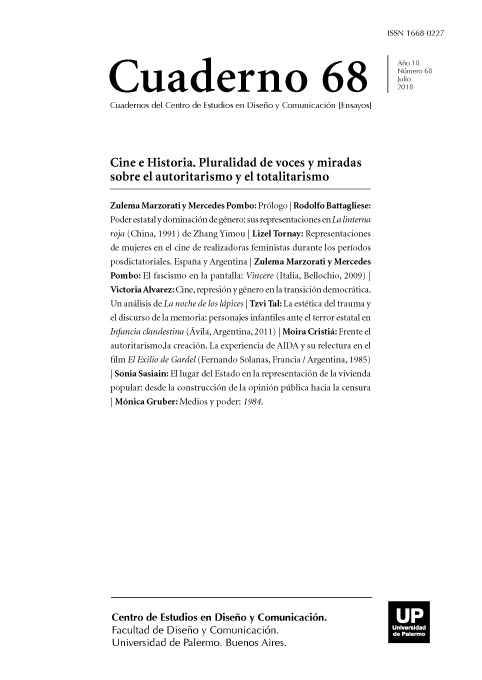Poder estatal y dominación de género: sus representaciones en La linterna roja (China, 1991) de Zhang Yimou
Abstract
The film can be interpreted as an aesthetic representation of the meticulous mechanisms of the exercise of power that have as purpose –as it´s proposed by Michel Foucault in the different stretches of his work–, to discipline and normalize those who pretend to question it. Foucault put it in reference to the modern forms of the army, the school, the prisons, hospitals, which we can extend to gender relations, a topic not dealt with by the author.
In the Red Lantern, the filmic representations of authoritarianism are not only associated with the everyday life of women subordinated to the law of the male, both socially and culturally, but can be interpreted as the construction of a kind of disciplining power that crosses the different political regimes of the history of China of the twentieth century. Filmed shortly after the repression in Tiananmen Square, the powerful images of power and patriarchy represent the traditional moral norms of Confucianism and re-signify, by extension, those of Communist China.
References
Alcaine, R. y Chen, M. (1998). Zhang Yimou. Madrid: Ediciones JC. Colección Directores de Cine N° 51.
Bailey, P. (2002). China en el siglo XX. Barcelona: Ariel Pueblos.
Bianco, L. (1987). Asia Contemporánea. México: Siglo XXI.
Liu, X. (2012). No tengo enemigos, no conozco el odio. Buenos Aires: Emecé.
Foucault, M. (1989). Vigilar y Castigar. Nacimiento de la prisión. Buenos Aires : Siglo XXI.
Foucault, M. (2002). Historia de la Sexualidad. Tomo 1 La voluntad del saber. Buenos Aires: Siglo XXI.
Meisner, M. (2007). La China de Mao y después. Una historia de la República Popular. Buenos Aires: Comunicarte.
Spence, J. (2011). En busca de la China moderna. México: 85 Tiempo de Memoria TUSQUETS editores.
Los autores/as que publiquen en esta revista ceden los derechos de autor y de publicación a "Cuadernos del Centro de Estudios de Diseño y Comunicación", Aceptando el registro de su trabajo bajo una licencia de atribución de Creative Commons, que permite a terceros utilizar lo publicado siempre que de el crédito pertinente a los autores y a esta revista.


